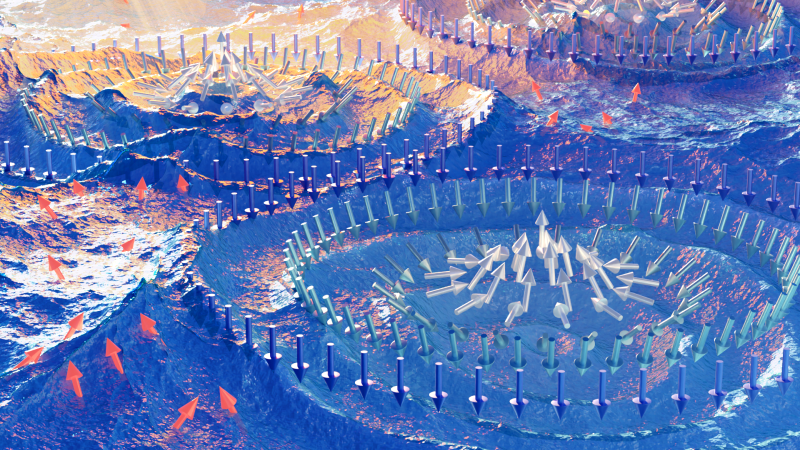
Article Courtesy of The University Of Tennessee-Knoxville, Tickle College of Engineering, by Randall Brown
The word "fractals" might inspire images of psychedelic colors spiraling into infinity in a computer animation. An invisible, but powerful and useful, version of this phenomenon exists in the realm of dynamic magnetic fractal networks.
Dustin Gilbert, assistant professor in the Department of Materials Science and Engineering, and colleagues have published new findings in the behavior of these networks-observations that could advance neuromorphic computing capabilities.
Their research is detailed in their article "Skyrmion-Excited Spin-Wave Fractal Networks," cover story for the August 17, 2023, issue of Advanced Materials.
"Most magnetic materials-like in refrigerator magnets-are just comprised of domains where the magnetic spins all orient parallel," said Gilbert. "Almost 15 years ago, a German research group discovered these special magnets where the spins make loops-like a nanoscale magnetic lasso. These are called skyrmions."
Named for legendary particle physicist Tony Skyrme, a skyrmion's magnetic swirl gives it a non-trivial topology. As a result of this topology, the skyrmion has particle-like properties-they are hard to create or destroy, they can move and even bounce off of each other. The skyrmion also has dynamic modes-they can wiggle, shake, stretch, whirl, and breath.
As the skyrmions "jump and jive," they are creating magnetic spin waves with a very narrow wavelength. The interactions of these waves form an unexpected fractal structure.
"Just like a person dancing in a pool of water, they generate waves which ripple outward," said Gilbert. "Many people dancing make many waves, which normally would seem like a turbulent, chaotic sea. We measured these waves and showed that they have a well-defined structure and collectively form a fractal which changes trillions of times per second."
Fractals are important and interesting because they are inherently tied to a "chaos effect"-small changes in initial conditions lead to big changes in the fractal network.
"Where we want to go with this is that if you have a skyrmion lattice and you illuminate it with spin waves, the way the waves make its way through this fractal-generating structure is going to depend very intimately on its construction," said Gilbert. "So, if you could write individual skyrmions, it can effectively process incoming spin waves into something on the backside-and it's programmable. It's a neuromorphic architecture."
The Advanced Materials cover illustration depicts a visual representation of this process, with the skyrmions floating on top of a turbulent blue sea illustrative of the chaotic structure generated by the spin wave fractal.
"Those waves interfere just like if you throw a handful of pebbles into a pond," said Gilbert. "You get a choppy, turbulent mess. But it's not just any simple mess, it's actually a fractal. We have an experiment now showing that the spin waves generated by skyrmions aren't just a mess of waves, they have inherent structure of their very own. By, essentially, controlling those stones that we 'throw in,' you get very different patterns, and that's what we're driving towards."
The discovery was made in part by neutron scattering experiments at Oak Ridge National Laboratory's (ORNL) High Flux Isotope Reactor (HFIR) and at the National Institute of Standards and Technology (NIST) Center for Neutron Research. Neutrons are magnetic and pass through materials easily, making them ideal probes for studying materials with complex magnetic behavior such as skyrmions and other quantum phenomena.
Gilbert's co-authors for the new article are Nan Tang, Namila Liyanage, and Liz Quigley, students in his research group; Alex Grutter and Julie Borchers from NIST, Lisa DeBeer-Schmidt and Mike Fitzsimmons from Oak Ridge National Laboratory; and Eric Fullerton, Sheena Patel, and Sergio Montoya from the University of California, San Diego.
The team's next step is to build a working model using the skyrmion behavior.
"If we can develop thinking computers, that, of course, is extraordinarily important," said Gilbert. "So, we will propose to make a miniaturized, spin wave neuromorphic architecture." He also hopes that the ripples from this UT Knoxville discovery inspire researchers to explore uses for a spiraling range of future applications.
HFIR is a Department of Energy Office of Science user facility.






